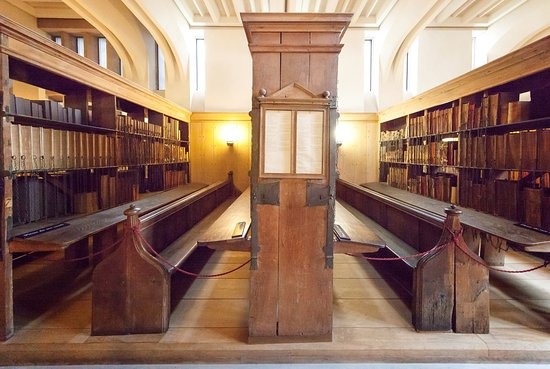The Hereford Cathedral Library: The Largest Historic Chained Library In The World
The Hereford Cathedral Library is located within the historic Hereford Cathedral in England.
It’s not just any library—this one has been around since the 12th century and is home to some incredibly rare and valuable books and manuscripts.
The library is perhaps best known for its Chained Library, a rare and intact example of a once-common security system in European libraries.
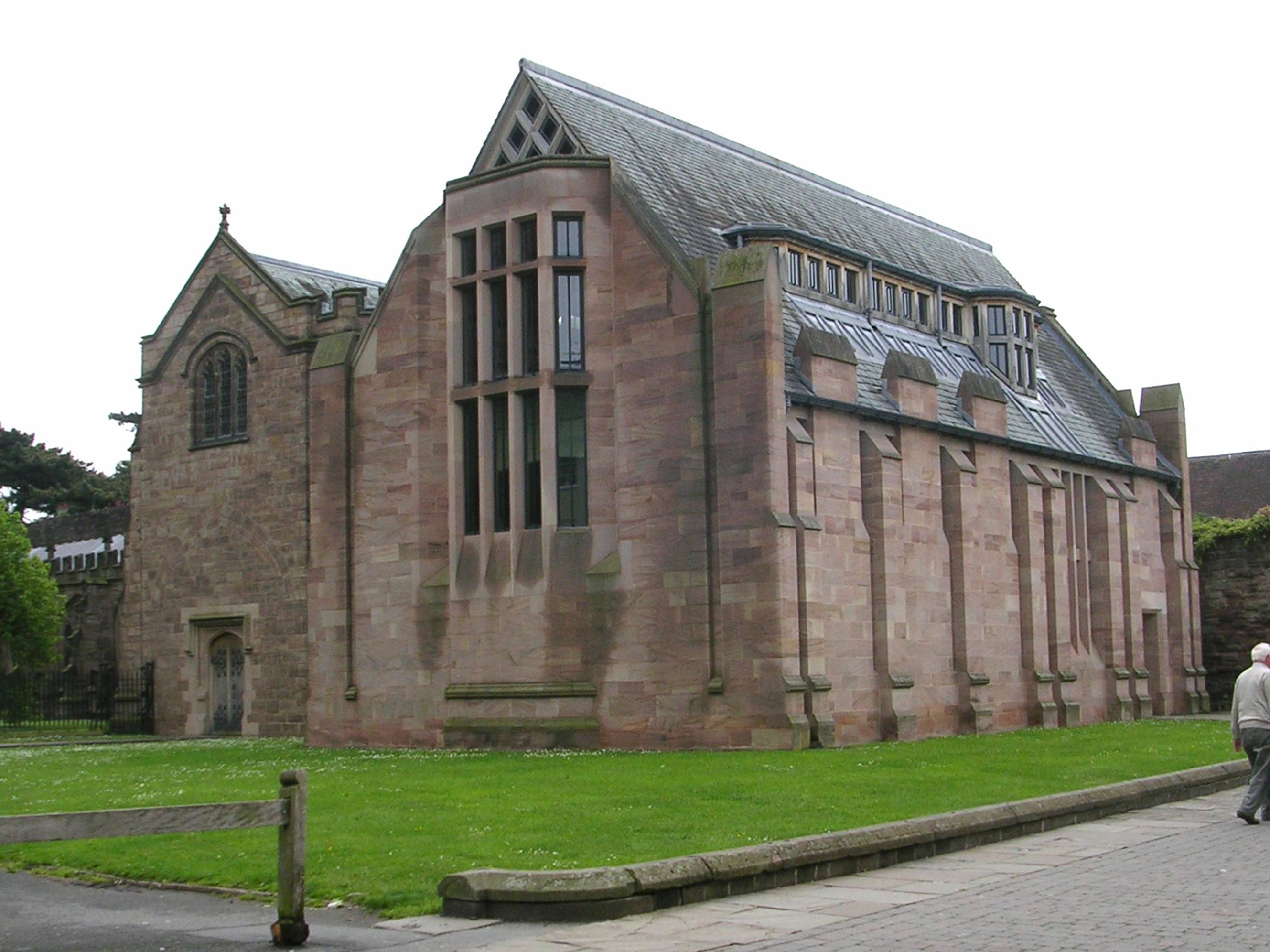
A Library With Deep Historical Roots
The origins of the Hereford Cathedral Library trace back to the 12th century when books were first gathered and stored within the cathedral.
However, it was during the reign of Elizabeth I that the library underwent significant transformations.
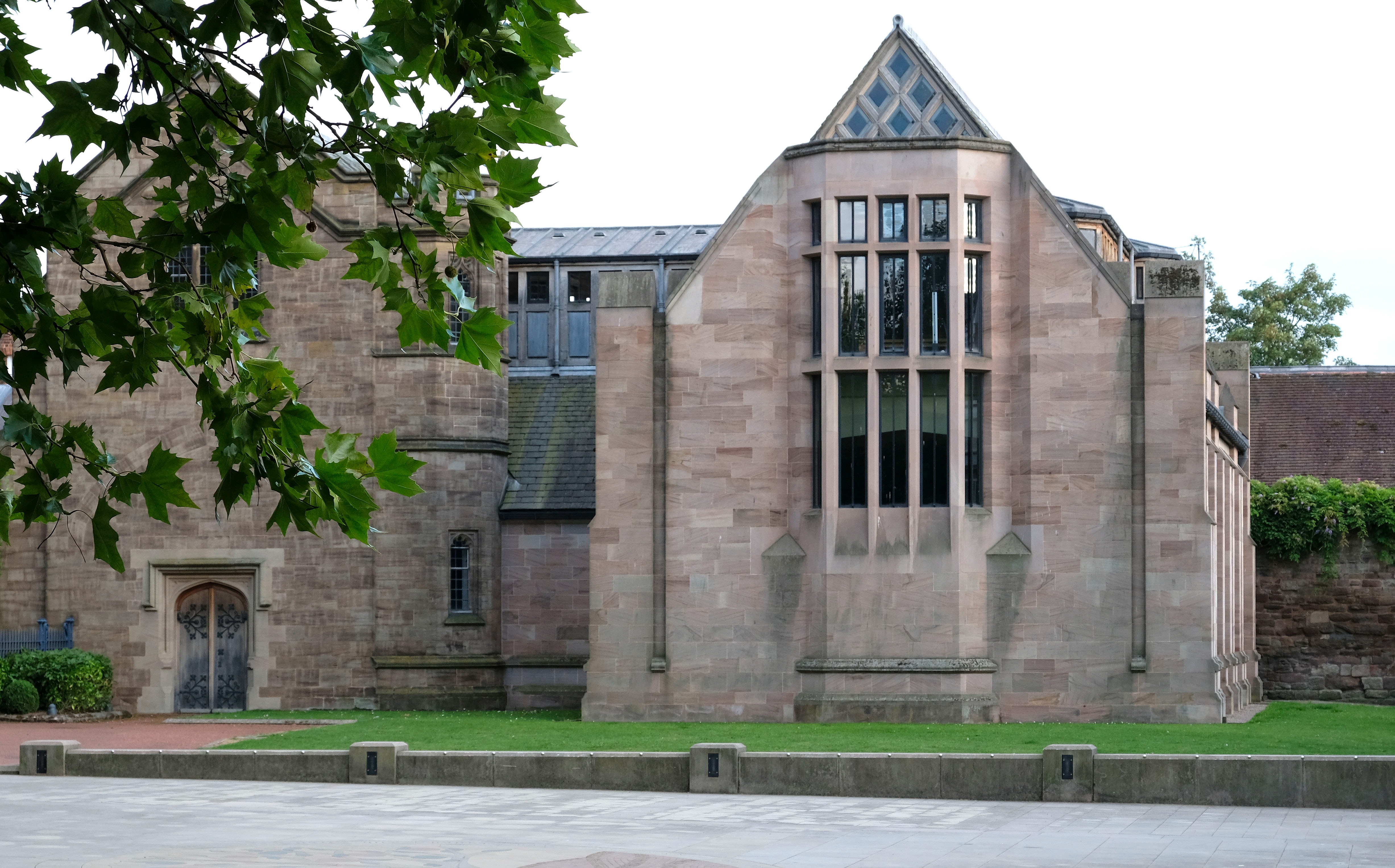
In 1582, a commission found the collection to be disorganized and neglected.
In response, the library was moved to the Lady Chapel in 1590, and in 1611, the Chained Library was established.
This was thanks to Thomas Thornton, a canon of Hereford who was also a vice-chancellor at Oxford University.
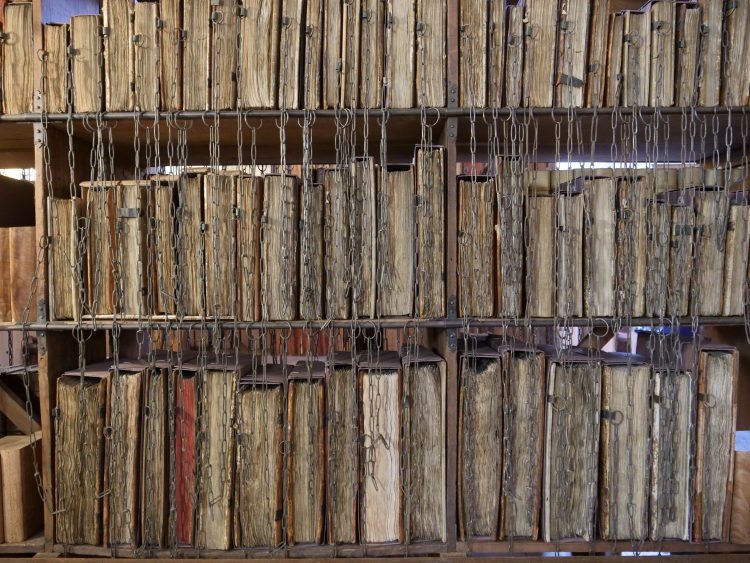
Thornton introduced the practice of chaining books to their shelves.
This may seem strange today, but back then, books were incredibly valuable, and theft was a real concern.
The chains allowed people to read the books at a desk but not remove them from their place on the shelf.
This system, now a rare curiosity, was once common across Europe, but Hereford Cathedral’s Chained Library is the largest and most complete example that still exists.
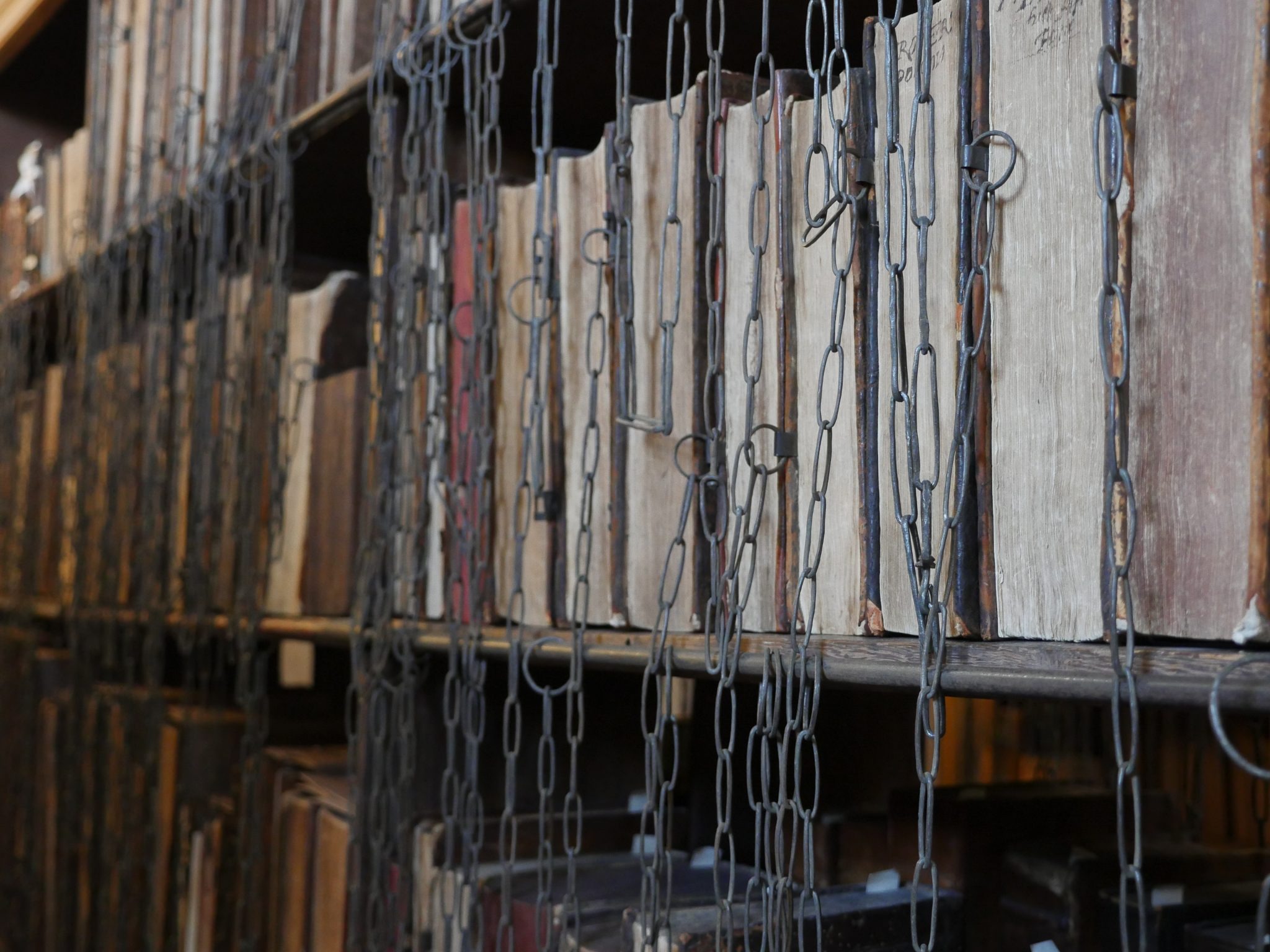
Over the centuries, the Chained Library expanded with many new additions
One significant boost came in 1678 when the library received a collection from the Jesuit College at Cwm in Wales after the college was closed down.
This added a wealth of theological works to the library’s collection.
In the 19th and 20th centuries, the library faced some challenges, especially during the cathedral’s restoration work in the 1840s.
The books had to be removed from the Lady Chapel and were temporarily split between other parts of the cathedral.
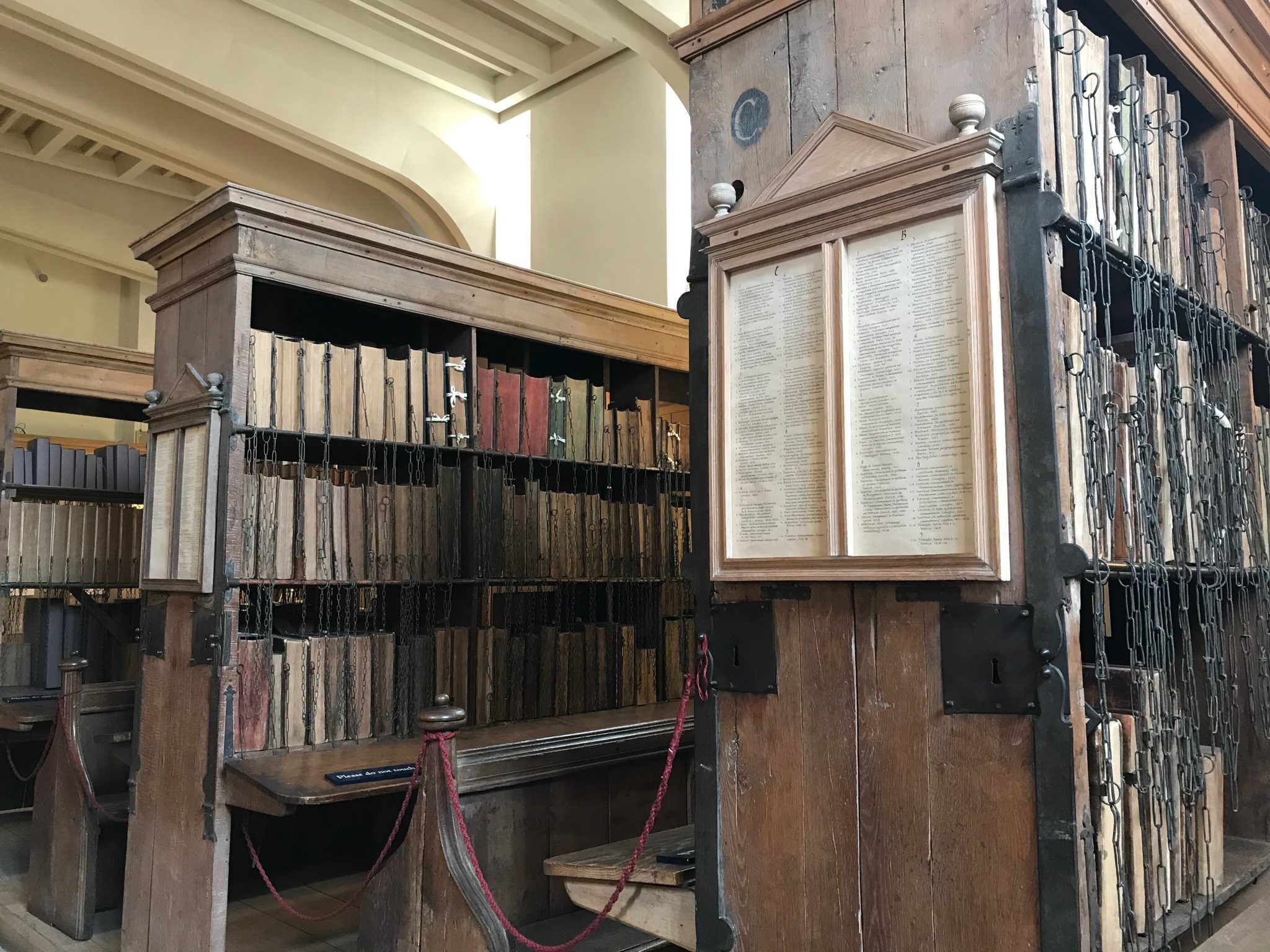
Despite these challenges, the library continued to improve, thanks to the efforts of dedicated librarians like Francis Tebbs Havergal and Canon William Wolfe Capes.
They worked hard to keep the books in good condition, focusing on things like temperature control and cleanliness to preserve the collection.
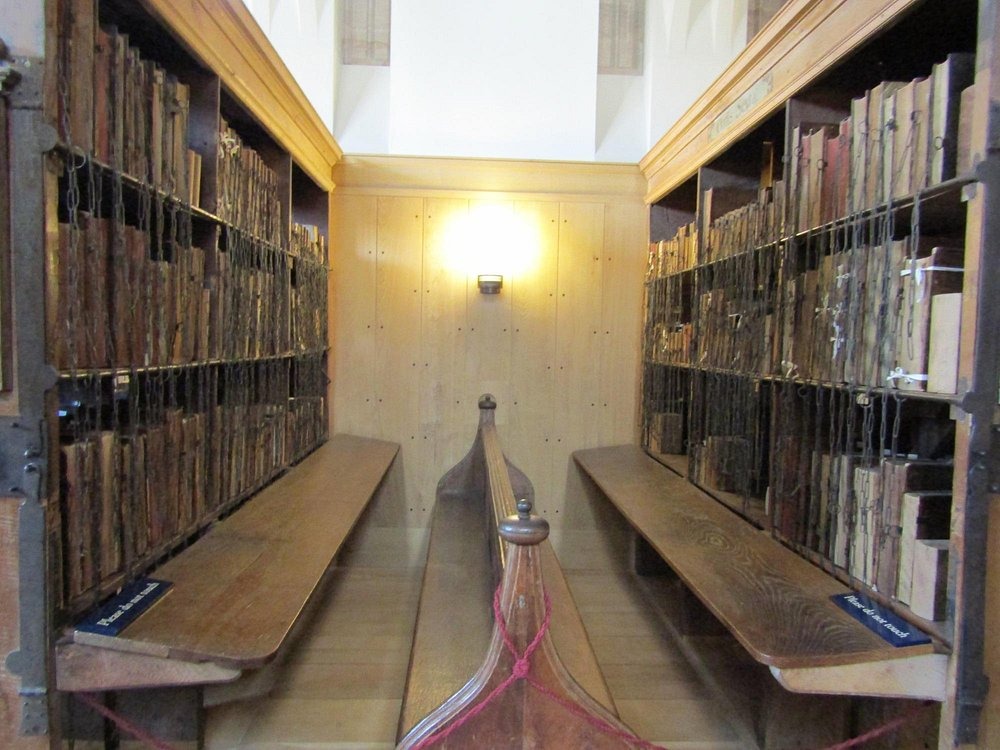
During World War II, the library’s most valuable items, including the famous Mappa Mundi—the largest medieval map still in existence—were moved to a safe location.
After the war, these treasures were returned to the library. However, in 1988, the Dean and Chapter of the cathedral considered selling the Mappa Mundi, sparking a public outcry.

This led to the creation of the Mappa Mundi Charitable Trust, which, with the help of donations, secured the Mappa and the Chained Library for future generations.
In 1996, a new building was opened to house these collections, ensuring they are kept in modern, controlled conditions.
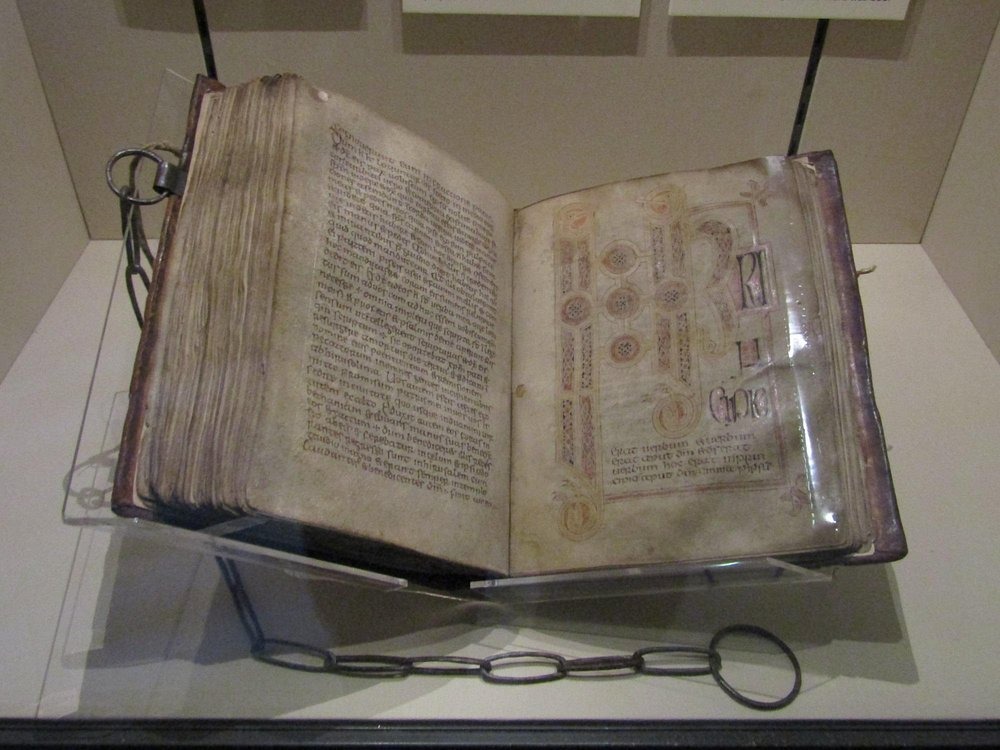
The largest historic chained library in the world
Today, the Chained Library at Hereford Cathedral is the largest of its kind in the world, still retaining its original chains, rods, and locks.
The collection includes around 1,500 books, with many dating back to the late 15th to early 19th centuries.
Among the most important items is the Hereford Gospels, a beautifully decorated manuscript from around 780, making it the oldest book in the library.
This ancient text, along with other medieval manuscripts, occupies two bays of the Chained Library.

Other notable works in the collection include Gratian’s ‘Decretum’, a key legal text from the 12th century, and the Hereford Breviary, a 13th-century manuscript detailing the daily services held at the cathedral during the Middle Ages.
The library also holds a rare 1506 edition of Guido Bonatus’ ‘Book of Astronomy’, complete with woodcuts of the zodiac and planetary diagrams.
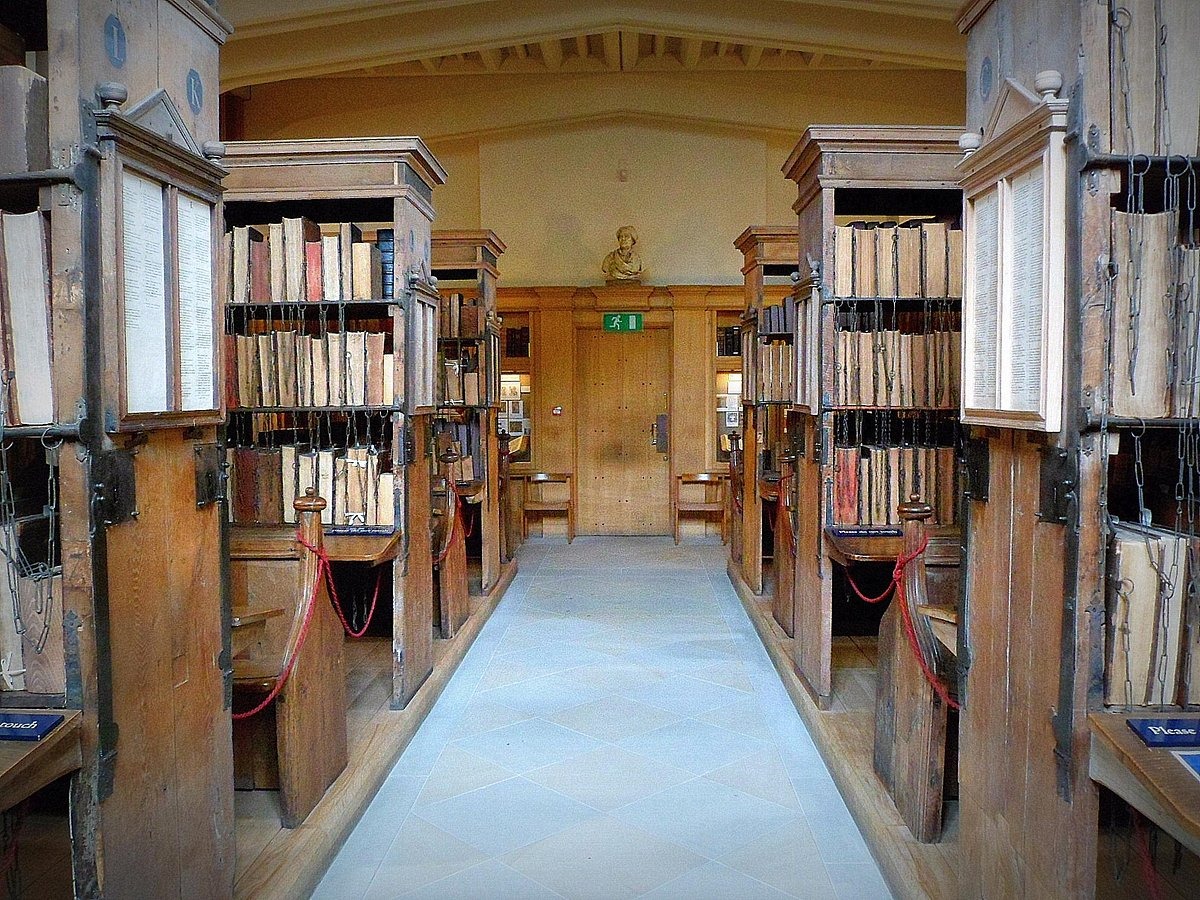
The chaining system is a unique feature of the library.
Unlike modern libraries, where books are shelved with their spines facing out, the books in the Chained Library are placed with their foredges facing the reader.
This unusual arrangement makes it easier to lift the books down and open them without twisting the chain, preventing damage to the delicate volumes.
